Cantaloupe usually grows in rich soil, having a lot of organic content. Feed your Cantaloupe plants to ensure good production. For success, it is essential to know when and how to fertilize. Fertilizing the Cantaloupe can provide numerous benefits for the plant. Fertilizing at the right time and the right way can deliver these benefits and help your Cantaloupe crop reach its full potential. Proper fertilization will help improve fruits production, size, and quality. It can also help improve the overall health of the plant. Let’s check out the best fertilizer for Cantaloupe/Muskmelon.
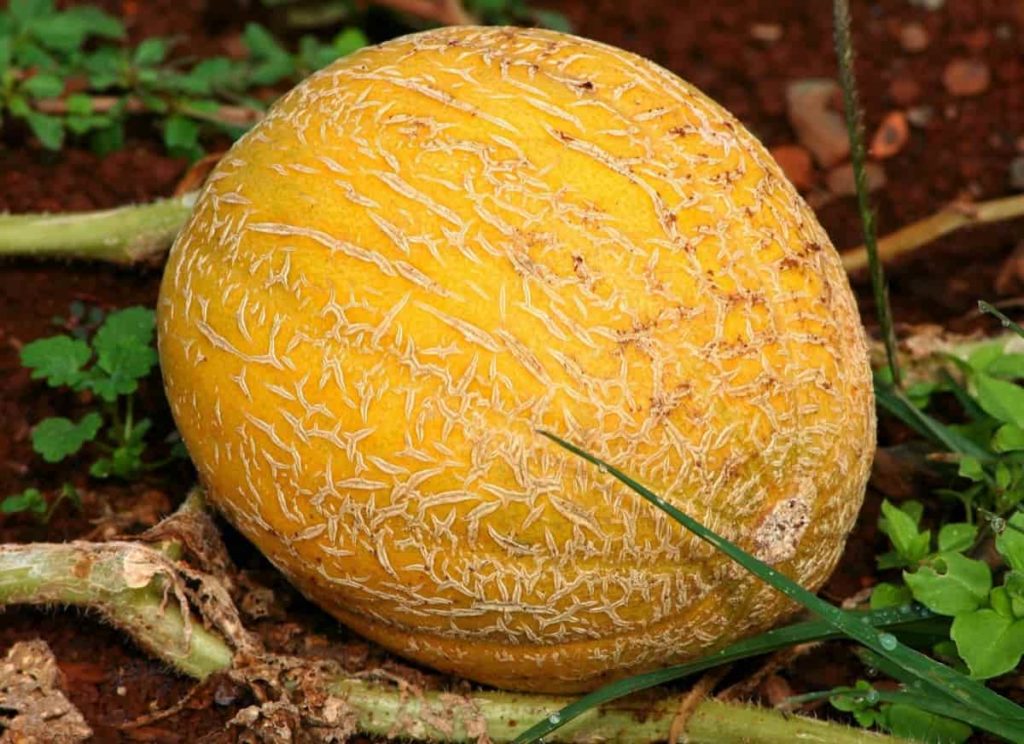
There are several different types of fertilizer in the market, so it is essential to choose the right one for the Cantaloupe plant needs. The ratio of NPK is a crucial consideration when selecting a fertilizer for Cantaloupe. Pay close attention to the fertilizer when fertilizing Cantaloupe plants, which you are using, and the stage of plant growth. Wrong fertilizer consumption at the wrong time can cause problems, leading to tall plants that produce very little fruit. Keeping the soil evenly moist in your Cantaloupe patch is also essential. These are heavy feeders and are drought-sensitive, so a permanent water supply is necessary.
Growth Stages of Cantaloupe
Pre-plantation stage
Both nitrogen and potassium boost the growth of the plant. Phosphorus and calcium also promote root and leaf growth. Boron, zinc, manganese, and molybdenum ensure good shoot growth.
Vegetative growth stage
Both nitrogen and phosphorus ensure continued growth. Both potassium and magnesium maxim concentration in leaf tissue before flowering; boron provides good flowers and fruit sets. Other micronutrients ensure good quality of leaf and that growth is not limited.
Flowering stage
Potassium maintains plant growth and maximizes the number of flowers. Flower and crop production increased by magnesium. Boron, zinc, and phosphorus increase the size of the fruit.
In case you miss this: Growing Muskmelon Indoors from Seed – a Full Guide
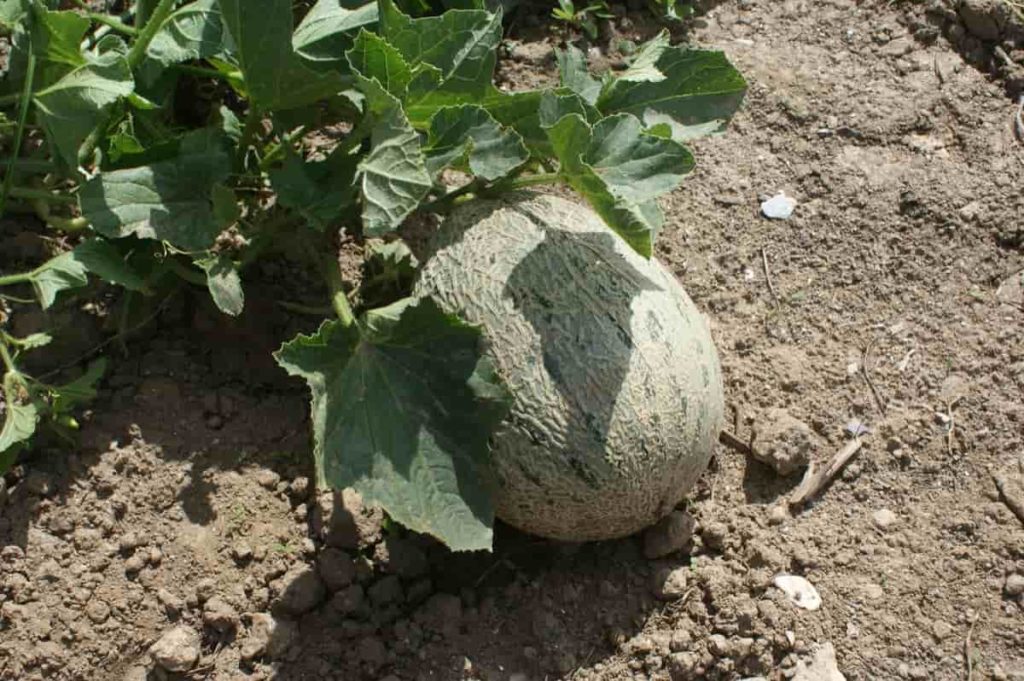
Fruit stage
Potassium minimize fruit disorders. Magnesium is required for quality fruit production are at this stage. Boron also ensures the ripening of fruit and the supply of good calcium. Magnesium, iron, manganese, and zinc promote healthy fruits.
Best fertilizer for Cantaloupe/Muskmelon
Homemade fertilizers for Cantaloupe
Coffee grounds
Coffee grounds increase the taste of Cantaloupes. Nutrients in the coffee grounds are phosphorus, potassium, magnesium, and copper.
Banana peels
If you want to make your fertilizer, use banana peel as a potassium source. These are the best nitrogen sources, so you should add peels to the soil. If you are growing Cantaloupe indoors or inside the greenhouse, avoid using banana peel as it can attract insects like fruit flies that can affect other plants.
Natural fertilizers for Cantaloupe
Mulch is an essential factor that can be considered when growing Cantaloupe. Mulch not only keeps the soil warm, which these plants enjoy, but it helps maintain moisture, reduces weed growth, and keeps fruit away from the soil. While many prefer to use plastic mulch when growing Cantaloupes, you can also use a straw.
Compost manure for Cantaloupe
Compost and well rotten manure make the best fertilizer for Cantaloupes. The elements are not so concentrated, so you have to use about 450 grams for every 4 or 5 square feet. Compost and aged manure improve the soil structure as well as fertility. Compost or vermicompost can also be used if there is no arrangement of aged manure. It should be mixed in the field while preparing the land.
In case you miss this: Top 10 Fruits To Grow In Hydroponics
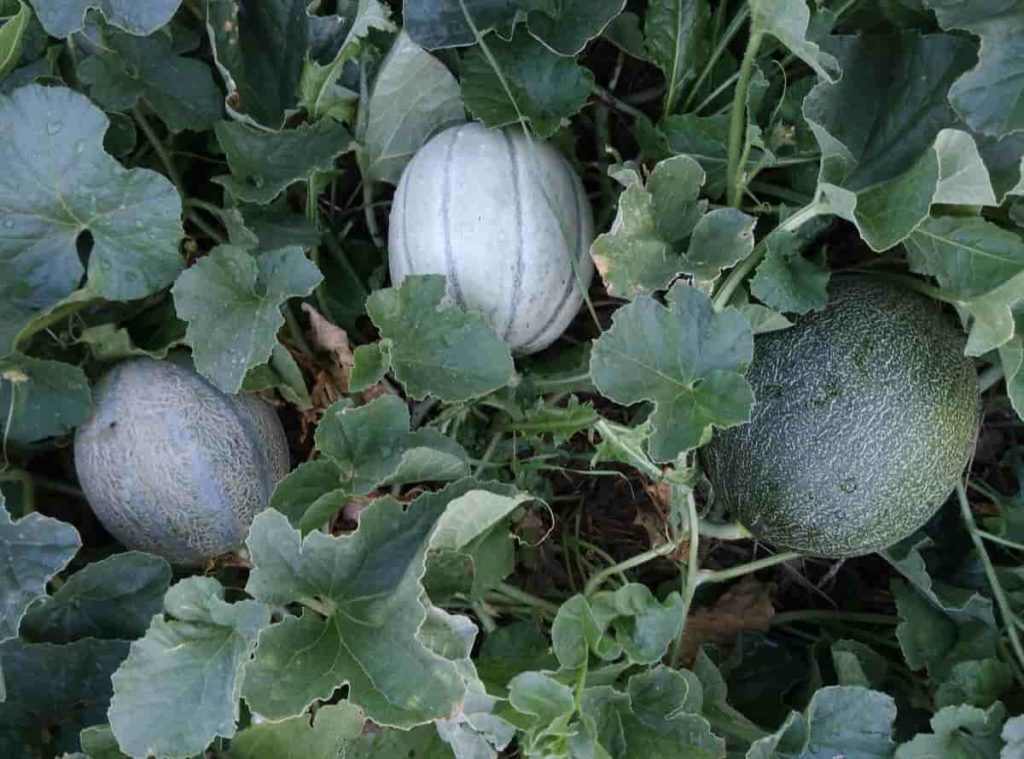
Organic fertilizers for Cantaloupe
When planting Cantaloupe, dig a hole and mix with a handful of compost or aged manure, one part blood meal, two portions bone meal, ¼-part green sand. Mix the amendments well and fill the hole. Mix 2 cups alfalfa meal, one cup kelp meal, one cup bone meal, 1/2 cup garden lime in a container with a lid. Mix two tablespoons of fertilizer in the soil around the base of each plant every three or four weeks. Keep the homemade compost mixture locked in an airtight container in a cool, dry place.
Liquid fertilizers for Cantaloupe
Fish emulsion – Cantaloupes also benefit from high nitrogen fish emulsion applications after the plant’s bloom. Mix one tablespoon of fish emulsion in a gallon of water and apply once a week after flowering on the soil around the plants. When true leaves appear, flowers appear, and fruit sets fertilized with fish emulation and kelp meal. Manure tea is also beneficial.
Cantaloupe can be sweetened by giving them borax and Epsom salt. For home garden use, use 3 and 1/2 tablespoons of borax and about 6 1/2 tablespoons of Epsom salts mixed in five gallons of water.
In case you miss this: Bitter Gourd Growing Tips, Tricks, Ideas, and Secrets
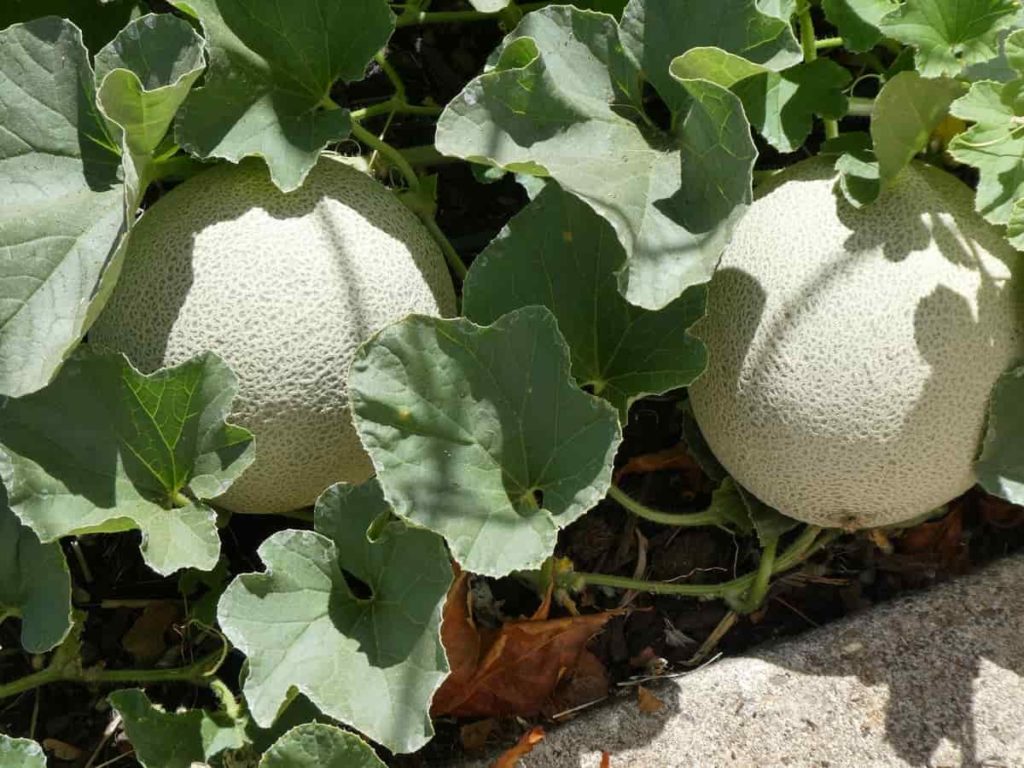
Commercial fertilizers for Cantaloupe
NPK ratio
If you want to use inorganic fertilizer, choose a complete fertilizer that contains all three elements like 10-10-10. At the initial stages, the Cantaloupe plant prefers nitrogen fertilizers. When Cantaloupe plants produce runners, it is time to add additional fertilizer. Side-dressing fertilizer replaces nitrogen which has been absorbed from soil by plants.
Since phosphorus and potassium-based fertilizer can significantly increase these two nutrients during dressing applications, cantaloupe plants can be re-fertilized after flowers appear. At this point, use a fertilizer with very little nitrogen than phosphorus and potassium. If using granules type of fertilizer, select a formula such as 5-10-10 or 2-12-12. More potassium and phosphors will help you produce healthy fruits.
Cantaloupe fertilizer schedule
Cantaloupes are planted in spring. Apply fertilizer before planting to ensure that your plants get total nutrients. To do this, spread the fertilizer evenly on the soil surface and mix it with a garden fork at least two inches deep. The best time for fertilizing is usually when more flowers bloom. When you see your Cantaloupe become the first fruit on the plant, it’s time to fertilize again. It will encourage growth and later get better quality Cantaloupes.
In case you miss this: Watermelon Growing Tips, Tricks, Ideas, and Secrets
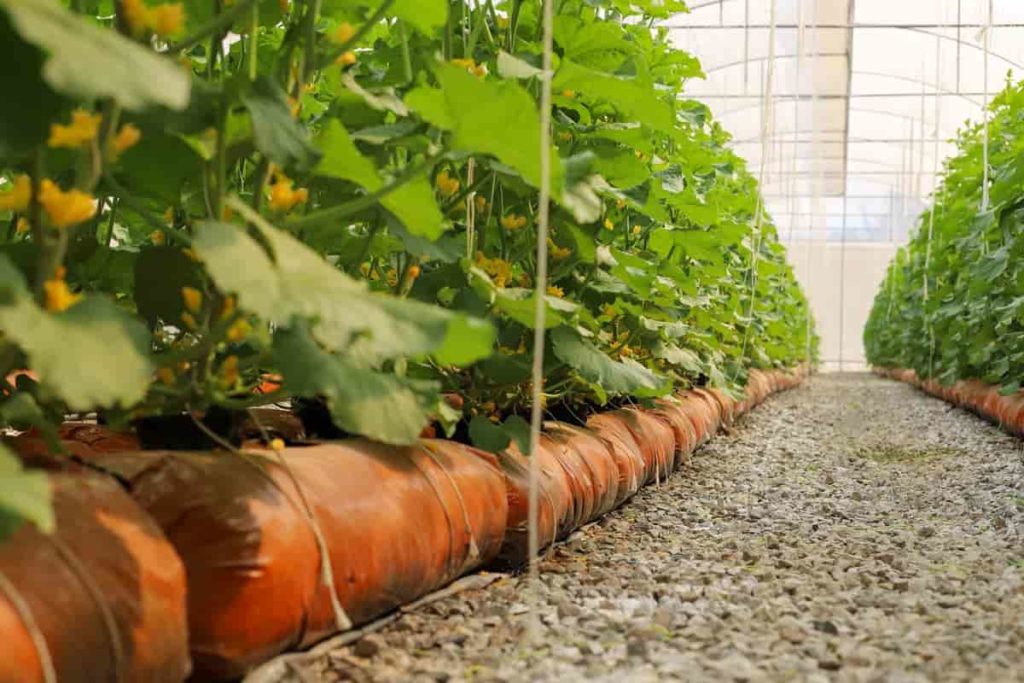
It would be best if you did not fertilize Cantaloupe unless the plant is at least 4 inches long. At this point, you can apply a balanced dose of fertilizer. If you want to use granule-type fertilizer, choose one with 10-10-10 or 5-5-5. These indicate the fertilizer’s amount of nitrogen, phosphorus, and potassium. Scatter grains on the ground around the plant at the manufacturer’s recommended rate. Most granular fertilizers are applied at 680 grams per 100 square feet.
When fertilizing Cantaloupe with the grain, do not allow fertilizer to get in touch with the plant as it can burn. After scattering the granules, water them thoroughly so that they dissolve and soak in the soil. You can also use water-soluble products when fertilizing Cantaloupe. Choose a balanced fertilizer for fruit and plants and mix it in water per the manufacturer’s instructions. Apply once or twice when you usually water your plant anyway. Cantaloupe plants are fertilized after flowers appear.
At this point, you use phosphorus and potassium fertilizers. Select a formula such as 5-10-10. If you add nitrogen-rich manure this time, the plant will grow huge but will not produce any fruit. If you want to use the fertilizer soluble in water after the plant flowers, choose low nitrogen fertilizer. Liquid seaweed is also a good fertilizer rich in potassium and phosphorus.
In case you miss this: Dragon Fruit Growing, Profit, Cost, and Yield
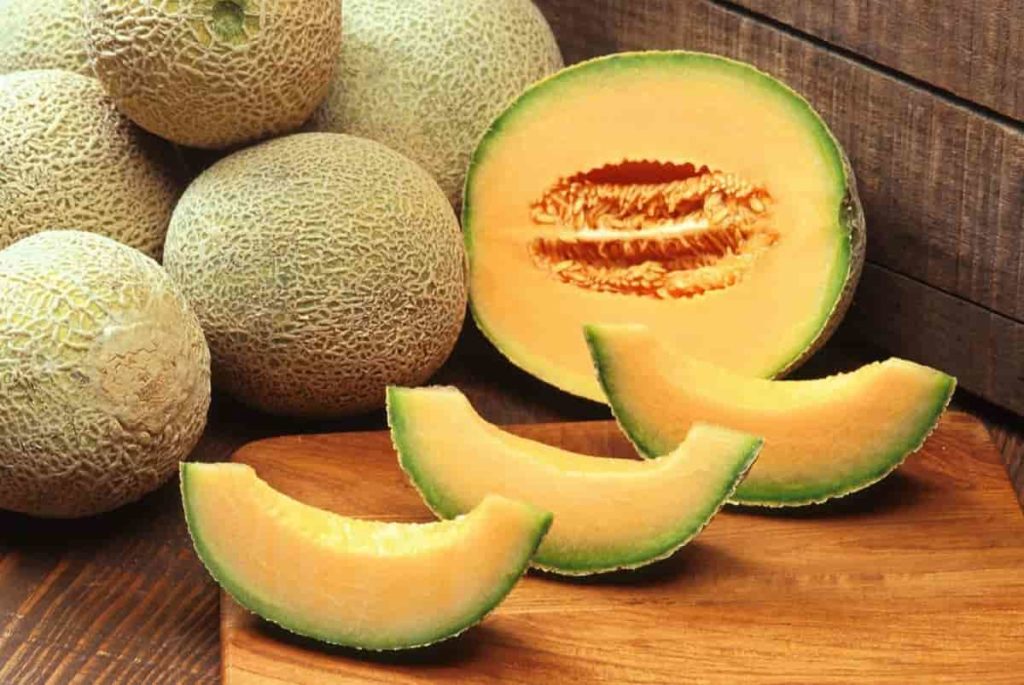
How to fertilize Cantaloupe in pot
When the plant is growing four to six inches long, apply the fertilizer from balanced liquid fertilizers like 5-5-5 (NPK) as per the instructions on the package. Re-fertilize in about two or three weeks or when the flower starts. But this time, use less nitrogen fertilizer, such as 5-10-10 fertilizer, so you don’t promote too many leafy growths and don’t grow enough fruit. Another essential factor of keeping Cantaloupes happy is to provide proper water.
These plants require permanent moisture but do not allow them to be filled with water. It is essential when growing them in containers that dry faster than garden soil. Place single a layer of straw or other mulching material to keep the soil moist. Keep the leaves dry by irrigating the plant base, not from the top.
- Broccoli Seed Germination and Selection
- Asparagus Seed Germination and Variety Selection
- Seasonal Flower Gardening: Best Practices for Spring, Summer, Fall, and Winter
- How to Grow Hibiscus from Flower
- Plantation Ideas for Home Decoration: A Beginners Guide
- Flower Garden Designs and Layouts for Beginners
- Planting and Spacing Techniques in Papaya: A Beginner’s Guide
- Growing Gold: Essential Techniques for Planting Pineapples
- How to Make Kalanchoe Plant Bushy: Home Remedies and Solutions
- 11 Reasons Why Your Gardenia is Not Blooming: Home Remedies and Solutions
- Eco Elegance: The Guide to Designing a Drought-Tolerant Landscape
- Gardening on a Slope: Strategies for Hillside Landscaping
- Nourish and Flourish: Top Organic Mulches for Thriving House Plants
- Everything You Want to Know about Indian Mogra Flower: Discover Uses and Growing
- Green Thumb Success: Expert Tips for Cultivating Greenhouse Pumpkins All Year Round
- Maximize Growth & Flavor: The Ultimate Guide to Companion Planting in Herb Gardens
- How to Control Rhododendron Problems Naturally: Home Remedies and Organic Ways to Fix Them
- Natural Magic: The Remarkable Benefits of Cinnamon for Plants
- Best Steps to Revive Dying Tulip with Natural and Organic Treatment
- 10 Reasons Why Your Angel Trumpet is Not Blooming: Remedies and Treatment
- How to Fix Periwinkle Leaf and Flower-Related Problems: Natural Remedies and Solutions
- How to Fix Zinnias Leaf and Flower Problems: Discover Natural and Home Remedies
- Organic Steps to Induce Lemon Tree Flowers: A Comprehensive Guide
- Bloom Booster: Crafting the Perfect Homemade Bougainvillea Fertilizer
- Optimizing Growth: A Guide to Applying NPK Fertilizer for Potted Plants
- 10 Best Homemade Fertilizers for Rubber Plant: DIY Recipes and Application Method
- How to Boost Female Pumpkin Flowers: Effective Steps for More Flowers and High Yields
- Transform Your Indoor Garden: Top Benefits of Pink Salt for Houseplants
- 10 Best Homemade Fertilizers for Peacock Plants (Calathea): Easy DIY Guide
- Unlock Blooms: 9 Reasons Why Your Potted Chrysanthemum is Not Blooming
- 8 Reasons Why Your Potted Hibiscus is Not Blooming: Fix it with Simple Solutions
- Unlock Blooms: 9 Key Reasons Your Potted Frangipani Won’t Flower
- 10 Reasons Why Is My Ice Plant Not Blooming: Remedies and Treatment
- 10 Reasons Why My Potted Hydrangea Not Blooming: Treatment and Remedies
- 10 Reasons Why is My Wisteria Not Blooming: Remedies and Treatment
- 10 Reasons Why is My Goldfish Plant Not Blooming: Remedies and Treatment